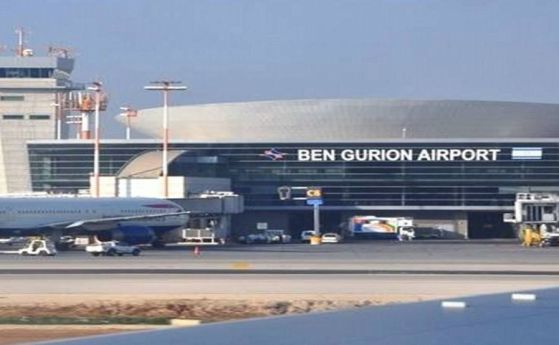

by André Oliveira
@andreufmg
BELO HORIZONTE, BRAZIL – After the kick-off, on the 12th of June, and the end of the first phase of the 2014 World Cup, it’s already possible to partially analyse the tournament’s development. In general, both local and foreign fans, journalists, and professionals have not hesitated to praise the games: off the field, they speak of the natural brazilian beauties, the country’s favourable climate and the receptivity of the locals; at the stadium stands, enthusiastic supporters watch impressive, exciting games; on the pitch, teams go ahead and score many goals. It seems that, yes, football has come home, and has done so in style.
Inside the arenas, 2.4 million viewers ensured an average attendance of 51,132 fans per game – this is the third biggest in history, after the World Cups of 1994 (68,991) and 2006 (52,491). The first phase had an incredible average of 2.83 goals per match – the highest since 1970 (2.97). Worldwide broadcasts have seen a considerable audience as well. In the United States, for example, which has a growing interest in their soccer, the game against Portugal was the most-watched soccer match in US television history, with more viewers than the NBA finals in 2013. In France, Switzerland vs. Le Bleus marked the highest TV ratings since 2007 and, in The Netherlands, the match between the Dutch and the Chileans brought the highest ratings since the final of the previous FIFA World Cup (2010).
Although there were fears of continued large-scale demonstrations amongst the people in protest against the high spending required for the tournament, Brazilian cities, now, surrender to the party spirit of the games – whether on the streets, at the stadiums or at the FIFA Fan Fests. Some small and scattered acts took place in São Paulo and Belo Horizonte – on the opening day – and in Rio de Janeiro on the 28th June, with some minor damage and police intervention. However, they cannot be compared, at all, to the protests, social unrest and vandalism which took place in June of 2013, during the FIFA Confederations Cup, also held in Brazil.

[Source: Portal da Copa]
To fully analyse the organisation of the 2014 World Cup, there are 5 points worth considering:
1 – SAFETY
With the mounting of 180,000 members of the police and armed forces – a record number in the World Cup’s history – the safety of the Brazilian streets and stadiums has, thus far, been well maintained. They enforced large exclusion zones around the venues were able to contain any protests elsewhere. Yes, there have been cases of petty theft and drug trade – many of them even committed by foreigners – but nothing serious at all.
In the stadiums, fans from different nations have peacefully supported their corresponding teams. Few hooliganism acts have occurred, and those that have were quickly dealt with by security. The most serious security breach thus far occurred in Rio de Janeiro, where Chilean fans, without tickets, stormed the Maracanã stadium through the media centre, just hours before Spain faces a tough match against Chile on the 18th June.
Until now, only three pitch raids have taken place, all of them committed by fans: one at the game between Germany and Ghana, in Fortaleza, by a polish supporter; the second, at the Germany vs. USA match in Recife, by a German man, and finally, on June 30th, where an Italian activist ran towards the pitch during the game between USA and Belgium, in Salvador. All of these cases were generally unserious.

[Source: Kai Pfaffenbach, REUTERS]
2 – INFRASTRUCTURE
The infrastructure, although still deficient, manages to absorb the great demand for services. It has been well received by many tourists. Approximately 600,000 foreign travellers and 3.1 million Brazilian football fans are expected to have used them by the end of the tournament on the 12th July. According to Federal Government data, so far most flights have been on time and only 4.2% have been delayed. Three new airport terminals have been opened – in the cities of São Paulo, Brasília and Natal – and whilst further upgrades at four of Brazil’s airports (Manaus, Fortaleza, Belo Horizonte and Cuiabá) were not finished in time for the tournament, these airports did manage to receive travellers safely and relatively comfortably. On the coast, four of the ports (Fortaleza, Natal, Recife and Salvador) were improved and, today, they are ready to receive international cruises and ships.
In the cities of Recife, Rio de Janeiro and São Paulo, metro lines and trains link the centre to the stadiums. In Belo Horizonte, Curitiba and Recife, BRT (Bus Rapid Transport) lines work efficiently. In the other host cities, special bus links drop tourists from hotels or meeting points to the venues. On the negative side, Natal did experience some difficulty in getting tourists to the Arena das Dunas stadium, due to a strike of the workers of the bus company and the intense rain on the day of the match between Mexico and Cameroon (on 13th June). In Salvador, traffic hampered the arrival at Arena Fonte Nova for The Netherland’s match against Spain. In Manaus, too, overcrowded buses complicated the transfer of Croation and Cameroonian fans to the stadium. Still, operational changes and changes in the climate have generated improvements in the subsequent games held in Manaus, Natal and Salvador; although big cities, they do not yet have a metro service.
Internet and telephone networks are reasonable and can withstand the large data demand. The Brazil vs. Chile match broke the ‘tweeting’ record on Twitter, which was previously held by the last edition of the USA’s Super Bowl. The game, which went to extra time and a penalty shootout, generated 16.4 million tweets. When Chilean player Jara shot against the post, the microblogging site reached 389,000 tweets per minute – 7,000 more than at the height of the Super Bowl.
Cuiabá, Manaus and Recife didn’t, unfortunately, have enough hotels for the large amount of tourists visiting the cities. In Cuiabá, many Chileans, who came from Chile in their motorhomes, were allocated spots in parks and public spaces. The local government has encouraged local residents to make alternative accommodations available. On the other hand, touristic hotspots – like Fortaleza, Natal, Salvador and Rio de Janeiro – and São Paulo, as a financial center, didn’t face any accomodation concerns.

Brasília International Airport (Source: Portal da Copa)

São Paulo/Guarulhos International Airport
3 – VENUES
Despite the mishaps and fears, the stadiums were ready just before kick-off – and they are impressive. However, minor works can still be seen in the surrounding areas of the venues in Curitiba, Natal, Porto Alegre and São Paulo.
Three weeks before the start of the World Cup, the stadiums used in the tournament were brought under FIFA’s administration; consequently, many of the problems seen during the games are not the responsibility of the Brazilian Government, rather the governing body of football.
Supporters paid dearly for tickets and complained a lot about the services provided inside the arenas. Queues at food kiosks and food shortages during the final minutes of the matches are among the most common complaints of the first games; however, improvements were made in the following events. There were, also, long lines to enter the stadiums, even minutes before Switzerland vs. Equador, in Brasília, due to a lack of workers at security control; and Ivory Coast vs. Japan, in Recife, due to a lack of X-Ray equipment required by security.
In general, the security become more rigorous after the raid by Chilean supporters, without tickets, at the Maracanã stadium, which occurred hours before Chile vs. Spain. After that, long lines are more common in venues of all host-cities due to the enhanced security.
In Recife, volunteers caught food poisoning due to the contaminated lunch provided by FIFA – although, of course, the food for journalists and guests is different to that provided for the volunteers.
What about the pitches? Well, both players and coaches, in general, have been admiring them. The strong rain didn’t harm the game between Germany and the USA, in Recife: the draining worked fine. Dry and bare surface was seen in Manaus, Cuiabá, Rio de Janeiro and São Paulo, but these didn’t cause any issue. Do we blame FIFA or the increased demand from the teams?

Arena das Dunas, Natal (Source: Portal da Copa)

Arena Pernambuco, Recife (Source: Portal da Copa)
4 – PRICES
Tourists, above all those from Latin America, complain of the high prices in Brazil. According to them, taxis, food, and accommodation are very expensive. The Brazilian currency – the Real – is stronger when compared to its Latin-American neighbours. Nevertheless, they are right, and some Europeans and Americans also criticise of the cost of living in Brazil.
The prices of hotel rooms increased in the run-up to the Cup – more so in the host-cities. Hotel owners justify the increases, saying that they are due to the high demand. In Rio, host-city of the 2016 Olympic Games and the golden girl of international tourism, prices in bars and restaurants, among tourist hotspots, increased above the rate of annual inflation in Brazil (which is currently around 6% per year). A ‘caipirinha’, in Copacabana, is more expensive compared to buying it in Manhattan. In Rio’s south zone, the prices of the famous Brazilian drink can vary up to 247% - from 13 reais to 45 reais (5.81 – 20 US dollars). Around the legendary Maracanã, a can of beer may cost up to 8 reais (nearly 4 US dollars) – when, just a month before, it cost 4.50 reais. This is, unfortunately, a perverse effect when a country hosts a great international event. Businessmen and women want to earn even more, given the arrival of thousands of tourists in Brazil. The real question is: will they be returning?

‘Caipirinha’ (Source: http://www.alambiquesdobrasil.com.br)
5 – THE WORLD CUP IS IN... BRAZIL!
Pleasant temperatures, beautiful beaches, good food and the receptivity of the Brazilian people are the strengths of Brazil for foreign tourists. There is some difficulty in communication, because many Brazilians don’t speak English, but, with the patience and charisma of the locals, everybody manages to be understood. The good music and parties in the period of the World Cup, are also noted by visitors, who make one thing clear: they want to come back to Brazil.
A country with large dimensions presents a huge variety of tourist attractions. From the Amazon Rainforest, in the North, to the beaches of the Northeast and the great cities with numerous cultural attractions in the South and Southeast, Brazil is a country that caters to all tastes. Even players from the 32 selected teams know of the greatness of Brazil and prefer to play in the mild temperatures of the South (10-15 degrees on average, during the winter) and avoid the heat and humidity of the North and Northeast (of 25 to 30 degrees in average, even in winter).
A democratic and multicultural country, with various races and religions which stand together in harmony, welcomes the world. All eyes are on South America’s largest country. Ready or not, it is Brazil's time to show itself to the world.

Rio de Janeiro (Source: Fifa)
The author, ANDRÉ PINTO DE SOUZA OLIVEIRA, 28, Brazil, graduate of the Federal University of Minas Gerais (UFMG) is lawyer, instructor and specialist in Environmental and Constitutional Law through the University of Lisbon (Portugal)
(translated from the Portuguese by Ben West)

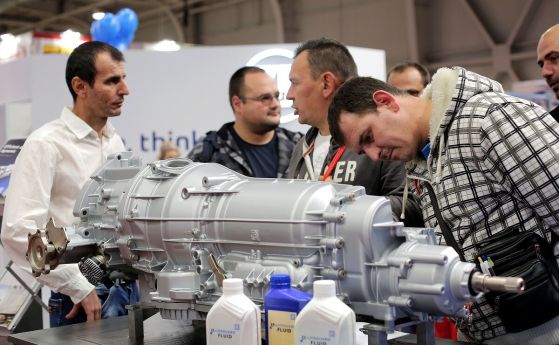



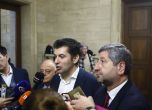


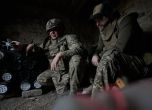







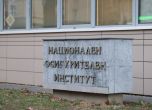









Коментари
Моля, регистрирайте се от TУК!
Ако вече имате регистрация, натиснете ТУК!
Няма коментари към тази новина !
Последни коментари
user4eto
Борисов се отрече от бъдеща сглобка с ПП-ДБ
Джендо Джедев
Борисов се отрече от бъдеща сглобка с ПП-ДБ
Constanza
Ще съградим съкрушителна военна сила, заяви сестрата на Ким Чен-ун
Constanza
Борисов се отрече от бъдеща сглобка с ПП-ДБ